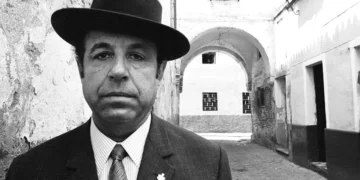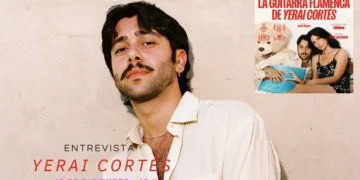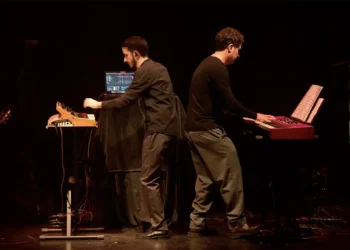|
| Daily coverage BIENAL DE FLAMENCO sponsored by: |
Dance: Mara Martínez, Fuensanta ‘La Moneta’,
Belén Mora, Encarna López, Nani Paños, Alvaro
Paños, Daniel Navarro, Pedro Córdoba. Guitar: Ricardo
Rivera, Keko Baldomero. Cante: David Palomar, Antonio Campos, Sabrina
Romero. Piano: Sergio Monroy. Bass, double bass: Alejandro Benítez.
Percussion: Sabrina Romero, Isaac Vigera.
It’s a sign of the changing times when music that
was considered derivative Spanish pop thirty years ago, now enjoys
a place of honor at Seville’s Bienal de Flamenco. The flamenco
rock music that sprung up in the seventies was in turn a tangent
of the opening set in motion by Paco de Lucía and Camarón
de la Isla and the global hippie movement that defines the era.
Although the group called Alameda which had a more flamenco orientation
was the first to become widely known, the first recording of the
group Triana came out a full four years before the former recorded,
which is why Triana is considered the beginning of flamenco rock.
 |
|
Javier Latorre
|
Just when the group’s extraordinary popularity began to decline,
Jesús de la Rosa, singer, composer and undisputed leader
of the group was killed in a traffic accident: immortality was guaranteed.
From the personality cult that now surrounds him comes this novel
project conceived by Javier Latorre in collaboration with Luis Clemente.
Having thus set the historic scene, we can discuss the work itself.
The most notable element is the choreography of Javier Latorre which
upstages Triana’s instrumental and vocal compositions although
some flamenco dance groups of the era had already used certain themes,
both of Triana and Alameda, to choreograph opening numbers, particularly
the popular “Abre la puerta niña” which opens
this show and is synonymous with Triana.
Surreal, disquieting and duly psychodelic
images that reflect the climate of the times
Granada dancer Fuensanta ‘La Moneta’ immediately stands
out from the rest of the group. This young star is making a name
for herself thanks to her temperament, energy and crushingly flamenco
projection. The quality of her dancing eclipses the rest of the
group and the short, bland siguiriya with traditional and contemporary
singing which she is permitted to dance leaves one wondering the
reason for not taking advantage of so much talent.
Interesting audiovisual work interrupts the dancing three or four
times with surreal, disquieting and duly psychodelic images that
reflect the climate of the times and suggest the tragic destiny
of Jesús de la Rosa. The arrangements and overall sound of
the music bring few memories of the original that we thought was
so modern in its day, but at least one of the voices captures the
melancholic drone of the lead singer.
What little wardrobe there is tends to grey and of course, following
the current fashion, there is almost no illumination, as if that
somehow makes it “deep”. The choreographies are complete
unto themselves, but collectively there is little variety…perhaps
this music was never meant to be danced. Nevertheless dancer Daniel
Navarro is a sight for sore eyes with his original style, and a
farruca by four male dancers manages to fuse flamenco and rock convincingly.
The final scene symbolizes the death of Jesús de la Roca
with candles and a dancer who falls into the outstretched arms of
the rest of the group recalling an identical scene with deceased
rock singer Freddie Mercury. The audience responded politely for
the final bow while one of the dancers pointed heavenwards to remind
us all where the star of the work was to be found.
Text: Estela
Zatania
|
|
Related products:
|
|
|
|























